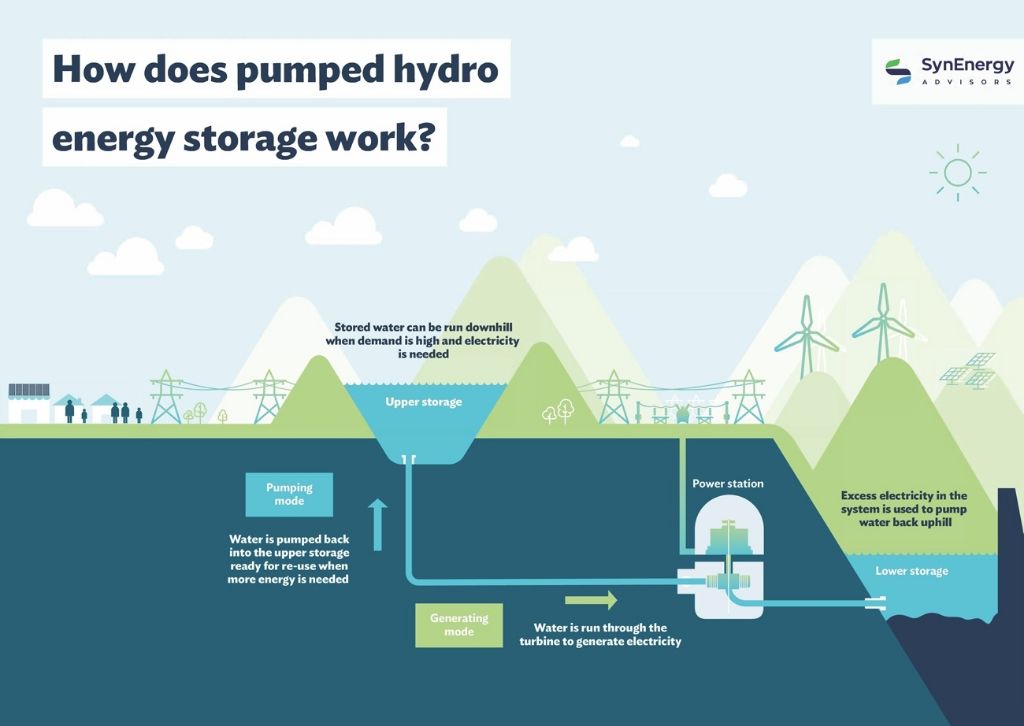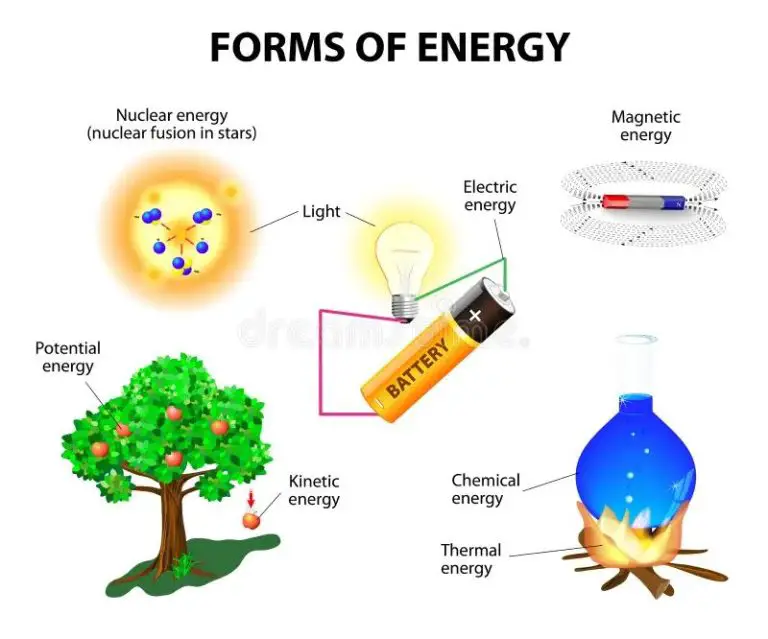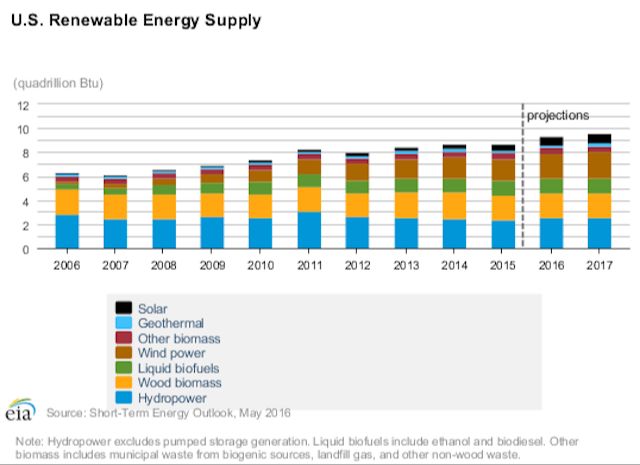What Energy Source Means?
What is an energy source?
An energy source is a resource that can produce power. Energy sources can be categorized as primary sources or secondary sources.
Primary energy sources are those that are found in nature and have not been subject to any human-induced energy transfers or transformations. Examples of primary energy sources include:
- Fossil fuels like coal, oil and natural gas
- Renewable sources like solar, wind, hydropower and biomass
- Nuclear fuels like uranium
These primary sources provide raw energy that must be converted or transformed into usable energy through various processes. For example, crude oil must be refined into petroleum products like gasoline or diesel. Uranium fuel must undergo nuclear fission in a reactor to produce usable nuclear power.
Secondary energy sources are those that are produced by converting primary energy sources. The main secondary energy source is electricity. Primary energy sources like coal, natural gas, nuclear and renewable sources are used to generate electricity through various processes. This electricity can then be used to power homes, businesses and industries.
In summary, primary energy sources are raw fuels found in nature that contain energy. Secondary sources like electricity are produced by converting primary sources into usable energy to meet human needs.
Fossil Fuel Energy Sources
Fossil fuels like coal, oil, and natural gas are energy-dense sources of energy formed over millions of years from the remains of dead plants and animals. Fossil fuels are a non-renewable energy source because they take millions of years to form and reserves are being depleted much faster than new ones are created.
The three primary types of fossil fuels are:
- Coal – A black or brownish-black sedimentary rock that is set on fire to generate electricity and provide heat.
- Oil – A liquid petroleum fuel used mainly for transportation, heating and electricity generation.
- Natural Gas – A hydrocarbon gas mixture composed primarily of methane used for electricity generation, heating, and cooking.
Fossil fuels are burned to convert their stored chemical energy into heat, which is used to spin turbines to generate electricity. They can also be directly burned for heating and transportation purposes. Fossil fuels are the world’s dominant energy source, providing about 84% of global primary energy demand.
While fossil fuels have enabled modern prosperity, their use releases carbon dioxide and other greenhouse gases into the atmosphere, contributing significantly to global warming and air pollution. Extracting and transporting fossil fuels can also damage environmentally sensitive areas. However, they remain a vital energy source as the world transitions to a lower-carbon economy.
Renewable energy sources
Renewable energy comes from natural sources that are constantly replenished, such as sunlight, wind, water, and geothermal heat. The main types of renewable energy are:
Solar energy
The sun provides a vast source of energy that can be harnessed in different ways. Solar photovoltaic (PV) panels convert sunlight directly into electricity, while concentrated solar power (CSP) systems use mirrors to focus sunlight to drive traditional steam turbines. Solar energy is widely used for electricity generation, heating water, and providing light.
Wind energy
Wind turbines capture the kinetic energy of wind to generate mechanical power or electricity. Wind power is one of the fastest growing renewable sources. Large wind farms consisting of many turbines now provide a significant share of electricity in many countries.
Hydropower
Flowing water creates kinetic energy that can be converted into electricity using turbines and generators at hydroelectric dams. Hydropower provides around 16% of the world’s electricity from facilities ranging from large dams to small run-of-river systems.
Geothermal energy
Geothermal energy harnesses the natural heat inside the Earth to produce steam to drive turbines and generate power. Geothermal power provides constant baseline electricity production and can be accessed through geothermal wells or hot springs.
The key benefits of renewable energy are that it produces little to no global warming emissions, helps diversify and secure energy supply, and reduces dependence on fossil fuels. The usage of renewables has grown rapidly as costs have declined. Solar and wind are now the cheapest sources of new electricity generation in many markets.
Nuclear Energy
Nuclear energy is produced from the splitting of uranium atoms in a process called nuclear fission. Uranium is a non-renewable resource found in the Earth’s crust that serves as the fuel for nuclear power plants.
In a nuclear power plant, uranium fuel rods are placed in a reactor core where a controlled nuclear chain reaction takes place. The tremendous amount of heat generated from fission is used to boil water into steam, which spins a turbine to generate electricity. Nuclear power plants produce around 10-11% of the world’s electricity.
Uranium is a very energy dense fuel, meaning a small amount of uranium can produce a large amount of electricity. This makes it a desirable fuel source. However, concerns around safety and radioactive waste have hampered growth of nuclear power. Accidents like Chernobyl and Fukushima have shown the potentially catastrophic impacts of a nuclear accident. Safely managing radioactive waste that remains dangerous for thousands of years is also a major challenge.
Nonetheless, countries like France, the US and China rely heavily on nuclear power. It offers a stable baseload energy source that produces virtually no air pollution or carbon emissions. With robust safety protocols and waste management procedures, nuclear energy can provide clean, low-carbon electricity to meet growing energy demands.
Electricity Generation
Electricity can be generated from various energy sources, both renewable and non-renewable. The most common sources for electricity generation are:
- Coal – Burning coal to heat water creates steam that spins a turbine connected to a generator.
- Natural gas – Natural gas can be burned to heat water and produce steam just like coal.
- Nuclear – The heat from nuclear fission reactions is used to convert water into steam to spin turbines.
- Hydropower – Flowing water spins large turbines connected to electricity generators.
- Wind – Wind turbines convert the kinetic energy of wind into rotational energy to turn an electricity generator.
- Solar – Solar panels convert sunlight into direct current electricity using the photovoltaic effect.
- Geothermal – Steam from geothermal reservoirs can be used to drive turbine generators.
- Biomass – Burning biomass fuels like wood waste also produces steam for electricity.
Electricity generation can be centralized or distributed. Centralized generation refers to large power plants that produce electricity for many consumers. This includes coal, natural gas, nuclear, hydropower, and some solar thermal plants. Distributed generation is produced at many smaller facilities and is located near where the energy will be used. Examples are rooftop solar panels, small wind turbines, and micro hydropower systems.
The share of electricity generated from renewable sources is increasing as costs fall and technologies improve. However, fossil fuels still account for the majority of global electricity generation.
Energy Consumption by Sector
The breakdown of energy use by sector provides insights into where energy demand is concentrated. The three major energy-consuming sectors are transportation, industrial, and residential/commercial. The transportation sector consumes the most energy, accounting for about 28% of total U.S. energy use. This sector relies heavily on petroleum to power cars, trucks, ships, trains, and planes. Transportation energy consumption is closely tied to economic activity and growth.
The industrial sector is the second-largest energy consumer globally, accounting for about 22% of world energy consumption. This sector includes manufacturing, agriculture, mining, and construction. Key energy-intensive industries include chemicals, petroleum refining, cement, paper, and steel production. Rising living standards in developing countries are increasing demand for industrial output and energy consumption.
The residential and commercial sectors combined represent about 40% of energy consumption worldwide. In developed countries, these sectors account for a larger share of energy use due to wider access to electricity and heating. Key activities driving energy demand include space heating and cooling, water heating, lighting, refrigeration, electronics, appliances, and computing equipment. Improving energy efficiency in buildings and adopting more efficient technologies can help curb energy consumption in these sectors.
Some of the most energy-intensive activities across sectors include transportation, steel production, cement manufacturing, chemicals production, aluminum smelting, commercial buildings, and data centers. Focusing efficiency efforts on these high-consumption activities can yield significant energy savings and emission reductions. Overall, more sustainable energy practices across sectors will be critical to transitioning to a low-carbon economy.
Energy Efficiency
Energy efficiency refers to using less energy to provide the same service. There are many ways we can reduce energy waste through improvements in technology, design, and regulations.
Using more energy efficient appliances and electronics is one of the easiest ways to cut down on energy waste. Replacing old incandescent lightbulbs with LED bulbs, buying Energy Star certified appliances, and utilizing smart power strips can help reduce the amount of electricity used in homes and businesses. Improving insulation, weatherstripping, and utilizing passive solar design techniques can also curb energy waste in buildings.
At an industrial level, upgrading to more efficient equipment, optimizing processes, and utilizing waste heat recovery systems can significantly improve energy efficiency. Regulations that set energy efficiency standards for appliances, automobiles, and buildings have also driven progress.
The benefits of energy efficiency are multi-fold. It reduces energy costs for consumers and businesses. It lowers greenhouse gas emissions associated with energy production. It enhances energy security by decreasing dependence on imported fossil fuels. Energy efficiency is often the most cost-effective way to reduce energy consumption and leads to many environmental and economic benefits.
Energy storage
Energy storage technologies allow energy produced at one time to be stored and used at a later time. Storage provides flexibility in energy systems by shifting the time of energy generation and use. Some key existing and emerging storage technologies include:
Batteries
Batteries are electrochemical devices that convert chemical energy directly into electrical energy and store it. Many different battery technologies exist such as lithium-ion, lead-acid, nickel-cadmium, sodium-sulfur, and flow batteries. Lithium-ion batteries are the most promising for utility-scale energy storage due to their high energy density. Battery storage can provide benefits like grid stabilization, integration of renewable energy, and off-grid power supply.
Pumped hydro storage
Pumped hydro is currently the largest-capacity form of grid energy storage. It works by pumping water uphill to a reservoir at times of low electricity demand and releasing it through a turbine to generate electricity when demand is high. Pumped hydro can quickly adjust output to meet peak power demands.
Compressed air energy storage

Compressed air energy storage (CAES) uses excess electricity to compress air in an underground cavern which is later released to drive a turbine. It allows large amounts of energy to be stored for long durations. CAES plants are geographically limited by suitable underground geology.
Key challenges for energy storage include high costs and energy losses during the charge/discharge process. But storage will be critical to enable high renewable energy penetration in electricity grids. Applications include energy management for utilities and industries, integration of renewable energy, electric vehicle charging, and off-grid power systems.
Energy Access
Energy access refers to the ability of individuals and communities to access affordable, reliable and sustainable energy services. Currently, there are still major gaps in global energy access, with many developing countries lacking basic electricity infrastructure. According to the IEA, nearly 770 million people worldwide still lack access to electricity.
The regions with the lowest rates of energy access include sub-Saharan Africa and developing Asia. In these areas, many individuals and communities rely on traditional biomass like wood, charcoal and animal waste for cooking and heating. Burning these fuels on open fires or inefficient stoves leads to indoor air pollution, posing risks to health and exacerbating poverty.
Closing the energy access gap is a major priority for international development efforts. Initiatives like the UN’s Sustainable Energy for All seek to provide universal energy access by 2030. This will require major investments in extending electricity grids, developing off-grid and mini-grid solutions, deploying solar home systems, and upgrading cooking fuels and stoves. With appropriate policies and technologies, achieving full energy access globally is possible within our lifetimes.
Future of Energy
Going forward, global energy demand is projected to grow rapidly, especially as developing countries industrialize and populations grow. The International Energy Agency (IEA) projects global energy demand to increase by 50% by 2050 under current policies.
Fossil fuels are still projected to meet much of this growing demand, with oil, coal, and natural gas accounting for over 75% of energy use by 2040 according to IEA projections. However, renewable energy sources are projected to be the fastest growing energy sources over the next few decades. The share of renewables in global energy consumption is expected to increase from 14% in 2019 to over 20% by 2040.
Several key innovations and technologies could accelerate this transition and transform the energy sector. Advances in battery storage technology and continued cost declines for solar and wind power will make renewable energy more viable and cost-competitive. Emerging technologies like green hydrogen, carbon capture, small modular nuclear reactors, and new biofuels could also play a role. Stronger policies and regulations to curb greenhouse gas emissions and incentivize renewables will also shape the future of energy.
Overall, while fossil fuels will continue to dominate in the near term, renewables and new low-carbon technologies are expected to gain market share in the coming decades as the world transitions to a more sustainable energy system.





